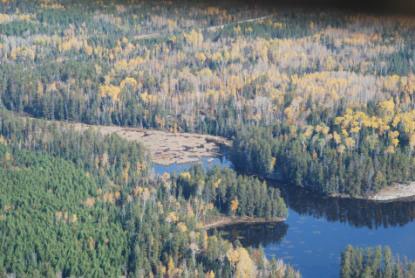BLM Wildfire Study


PROJECT SNAPSHOT
Project Type
Non-Bank ProjectLocation
Minnesota |Solution
Natural Resource RestorationEcological Setting
Grasslands, Prairies, & Upland ForestsTo help the U.S. Bureau of Land Management understand the vulnerability to wildfire on 15 of its remote parcels in northeast Minnesota, RES collected aerial imagery and applied remote sensing and GIS techniques to generate high-resolution data and GIS models that estimated wildfire vulnerability.
Flights to collect high-resolution multispectral imagery were strategically timed in October to maximize the diversity of spectral reflection provided by fall colors, thus improving the automated classification of vegetation cover.
Geospatial specialists processed data into four spectral bands (red, green, blue, and near-infrared) stacked as one data layer to further refine land cover classification and assist with interpreting vegetation community types, such as deciduous forest, grassland, herbaceous wetland, etc.
Using the aerial imagery data, RES developed a GIS-based wildfire vulnerability model comprised of three interrelated parts: 1) potential fuel source for ignition (ignition potential model); 2) potential fuel load of vegetation cover; and 3) connectivity between ignition sources and fuel loads.
The final report to BLM provided a Wildfire Vulnerability Score for each parcel and its adjacent half-mile perimeter buffer.
